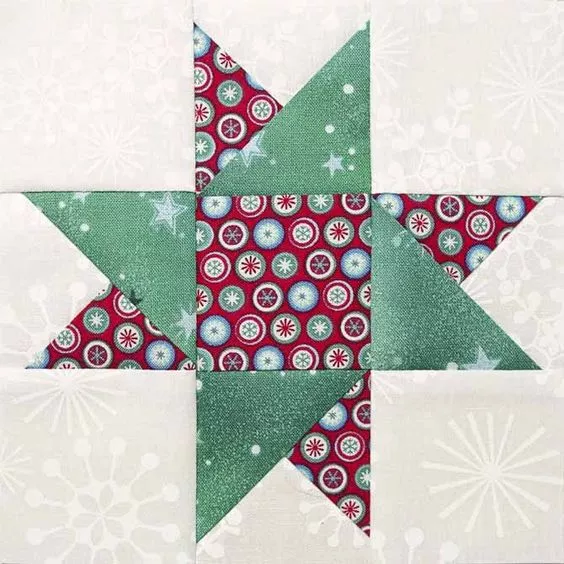
The art of patchwork is an enchanting way to create quilts and other textiles, combining pieces of fabric in a creative and harmonious way.
Whether you’re a craft enthusiast or just starting to explore the world of quilting, simple patchwork blocks are a perfect way to start your journey.
In this article, we’re going to explore how to make patchwork blocks in an easy and fun way, allowing you to create stunning quilts while improving your skills.

Image from Pinterest – free pattern
The first step to creating captivating patchwork blocks is selecting the right fabrics and colors. When choosing your fabrics, consider the theme or style you want for your quilt.
It can be a soft and calm color palette for a relaxing atmosphere, or vibrant and contrasting colors for a bolder and more energetic look.
Remember that variety is key. Mixing different fabric patterns, textures and scales will add visual depth to your blocks.
When selecting colors, think about how they complement and stand out from each other. A good practice is to pick a dominant tone, then add accent colors to create a nice balance.
One of the beauties of patchwork is the plethora of block patterns available. For beginners, it is recommended to start with simple block patterns such as “Nine Patch” and “Log Cabin”.
These classic patterns are great starting points as they involve straight cuts and direct assembly, allowing you to become familiar with basic patchwork techniques.
Pattern “Nine Patch”
The “Nine Patch” pattern is one of the simplest and most versatile blocks. It consists of nine equal squares, arranged in three rows and three columns.
You can play around with the colors and placement of the squares to create a variety of visual effects. The simplicity of this pattern makes it perfect for beginners.
The “Log Cabin” pattern is another classic and easy to make pattern. It starts with a center square and is built by adding strips of fabric around that square in a spiral.
This pattern is great for experimenting with different color combinations and creating a warm and inviting feel.
Once you’ve chosen your fabrics and block patterns, it’s time to begin assembly. Here are some basic assembly techniques that will make the process easier:
Seam with 0.6 cm margin
When sewing the fabric pieces together, it’s important to use a consistent seam allowance to ensure the blocks fit together perfectly.
A 0.6 cm allowance is standard in quilting, but check your specific pattern’s instructions to confirm measurements.
Iron
The iron is an essential tool in patchwork. Always press the seams after each step to flatten the fabric for clean, professional results. Remember to press, not rub, to avoid distorting the blocks.
Precise Alignment
Accuracy in alignment is critical for the blocks to fit together perfectly. Use pins or clips to hold the pieces in place before sewing. Make sure the seam lines match and the corners line up.
Once you’ve mastered the simple patchwork blocks, it’s time to explore interesting variations and layouts for your quilt.
Try rotating the blocks or combining them in different ways to create unique patterns. Playing with the color arrangement can lead to surprising results.
Simple patchwork blocks make quilting a fun and rewarding activity. By carefully choosing fabrics, practicing simple block patterns, and applying proper assembly techniques, you’ll be well on your way to creating beautiful quilts full of character.
[activecampaign form=3 css=0]
Remember that patience and practice are essential to perfecting your patchwork skills. As you gain confidence, you can start exploring more complex patterns and advanced techniques. The world of patchwork is vast and exciting, offering endless creative possibilities. Have fun as you create pieces that warm the heart and tell stories through each carefully sewn piece of fabric.